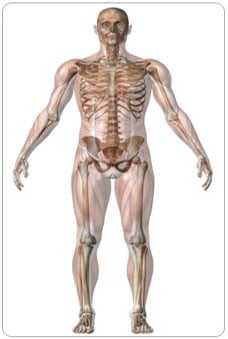Posture To Avoid Backache
Back pain is the most easily preventable problem. Ninety percent of us have a disabling episode of back pain at some point in our lives. It is important to consider our posture while at our workstation. Sitting for hours at a stretch can cause a lot of harm to our back muscles. Bad posture further adds to this deterioration. Adopting a user-friendly workstation by adjusting the office chair, computer and desk positioning can help our back.
Many people sit toward the front of their chair and end up leaning forward to look into their computer screen. The correct posture is to sit back on the chair and utilize the chair’s lumbar support to keep the back supported with the head and neck erect. Similarly, avoid slouching for long periods.
When sitting in a chair that rolls or pivots, don't twist at the waist while sitting. When standing up from sitting position, first move towards the front of your seat and then stand up by straightening your legs. Avoid bending forward at waist level. Get up from the chair by taking support of the table or the armrest.
Correct Posture while Sitting
Keeping your posture correct while sitting may require some practice and a person sometimes has to consciously correct it to avoid long-term back problems. Here is your guide to keeping the correct sitting posture:
- Do not lean over the desk for prolonged period of time.
- Do not sit too far from the desk with unsupported back.
- Adjust your chair to a proper height so that your knees are bent at a 90-degree angle.
- Keep your elbows bent at a 90-degree angle while resting on the work surface.Do not bend your neck to cradle the phone against the shoulder
Remember - Poor posture and incorrect body mechanics are two of the leading causes of neck and back pain.
Correct Posture while Standing
- Place your feet slightly apart with the knees straight and chin tucked.
- Avoid being in the same posture for a prolonged period of time.
- Keep shifting your weight from one foot to another on a frequent basis so as to avoid loading one foot with body weight for prolonged period of time.
- Use a footrest to elevate each foot while sitting or else try to keep your foot on the elevated step of the chair.
Top Five Tips to Keep your Spine safe While Lifting Weight
Avoid lifting objects that are too heavy. Try and keep the walking space at workplace free of obstacles so that people can move freely from one point to another without unusual breaks and twists. Here are some tips to keep your spine safe while lifting weight:
- Hold your shoulders back and straight.
- Keep the chin slightly tucked in and the pelvis shifted forward so that the hips are aligned with the ankles.
- Depending on the shape of the object to be lifted, hold it at the side and bottom while keeping it close to the body while keeping the back straight.
- If carrying weight always carry a balanced amount of weight in each hand.
- Always bend the knees instead of back while lifting an object
Driving Posture
Regardless of travel time to and from work, your posture while driving can either contribute to or alleviate back pain. First and foremost, it is important to sit with the knees in level with the hips. Place a rolled up towel or a back support behind the lower back for support. Sit at a comfortable distance from the steering wheel.
Sitting too far away from the wheel can aggravate back pain since it increases pressure on the lumbar spine and thus stress your neck; shoulder and wrist. However, sitting too close can increase risk of injury from the car’s steering wheel or airbag. Don’t forget to use your seat belt while driving. Good posture combined with body mechanics can substantially improve the way one’s back and neck feels at the end of the workday.
Position for Sleeping and Lying Down
- Keep the pillow under your head and not your shoulders. Thickness of the pillow should allow your head to be in a normal position.
- While sleeping on your back, keep a small pillow under your knees or a lumbar roll under your lower back.
- While sleeping on side, your knees should be slightly bent. Do not sleep on your side with knees drawn up to your chest. Most people tend to sleep in this position
- Avoid sleeping on your stomach, especially on a sagging mattress. Select a firm mattress or hard bed so that your back does not sag.
- When getting up from lying position, turn to your side, draw up your knees and swing your legs to the side of the bed. Now push yourself with your hands out of the bed. But avoid bending forward at your waist.



























